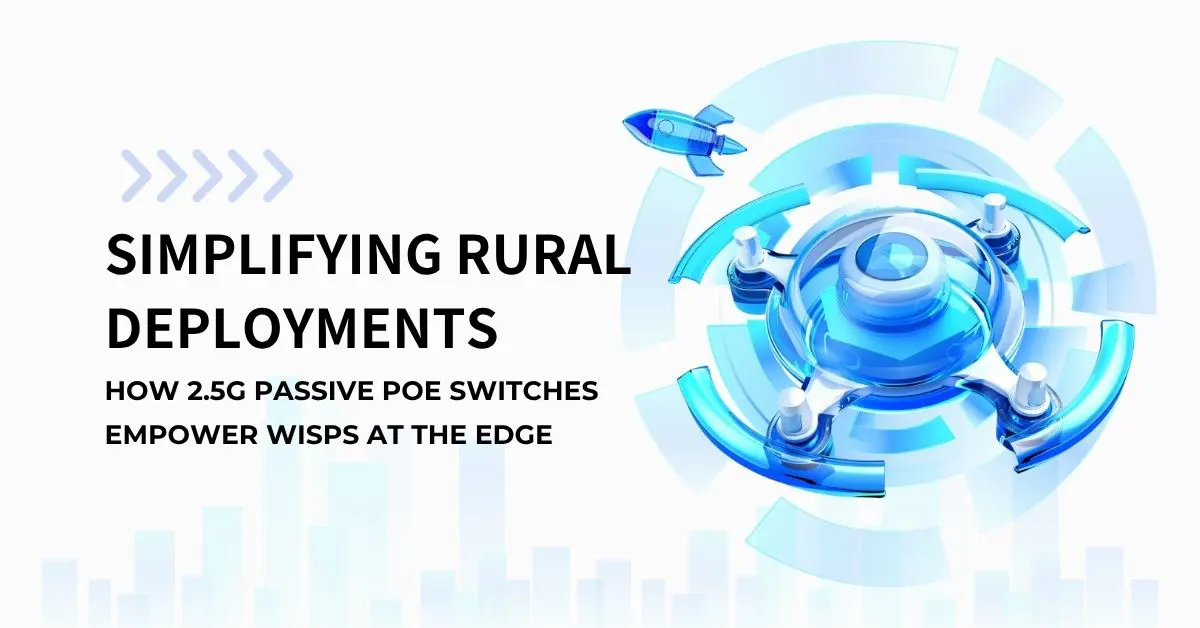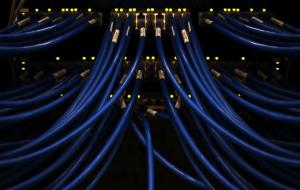In rural and remote areas, deploying reliable broadband infrastructure remains a logistical and financial challenge for Wireless Internet Service Providers (WISPs). With limited access to power grids, tight budgets, and demanding environments, traditional networking solutions often fall short. This is where 2.5G passive PoE switches step in—offering a simple, cost-effective, and robust way to build out high-performance edge networks.
Passive PoE over Active PoE
Power over Ethernet (PoE) allows network cables to deliver both data and power to devices, eliminating the need for separate power supplies. While Active PoE (802.3af/at PoE standards) are widely used and intelligent in negotiating power levels between devices, passive PoE is a simpler, non-standardized alternative.
Passive PoE sends a fixed voltage (typically 24V or 48V) over the Ethernet cable without negotiation. Devices must be designed to match the voltage, but the benefit is a simpler, lower-cost setup with fewer points of failure. There are no handshakes, controllers, or smart chips involved—just plug and power.
The Benefits of 2.5G Passive PoE in Remote Tower and Outdoor AP Installations
For WISPs building out towers and outdoor access points (APs) in rugged or off-grid locations, 2.5G passive PoE switches offer a powerful combination of simplicity and speed. Unlike traditional 1G links, 2.5G provides a higher bandwidth pipe to handle more clients, support backhaul needs, or carry additional services like VoIP and video.
These switches can power radios, cameras, and APs directly over a single Ethernet run—making them perfect for pole-mounted or tower setups where running extra power lines is expensive or impractical.
Enabling Cost-Effective, High-Speed Uplinks Without Complex Configurations
Because passive PoE doesn’t require negotiation, the switches are typically plug-and-play. This makes field deployment faster and easier for technicians, especially in areas with limited support infrastructure. The addition of 2.5G uplinks provides the speed needed for modern wireless gear without the cost and complexity of fiber or multi-gig routers.
For small WISPs and local operators, this translates into faster rollout times, fewer configuration headaches, and reduced truck rolls.
Low Power Consumption
In off-grid environments, every watt counts. Passive PoE switches generally consume less power than their managed or IEEE-compliant counterparts because they skip the overhead of power negotiation and advanced switch features.
Combined with low-voltage radios and solar power systems, these switches can form the backbone of an energy-efficient deployment—keeping uptime high even in the most remote corners of the map.
Cutting Cabling and Improving Uptime in Edge Network Builds
By consolidating power and data into a single cable run, WISPs can dramatically reduce cabling complexity and failure points. Fewer cables mean fewer opportunities for damage, corrosion, or poor connections—especially critical in harsh outdoor environments.
In addition, passive PoE systems are inherently more robust due to their simplicity. There are fewer moving parts, less chance of a failed negotiation, and minimal configuration—resulting in higher reliability and easier troubleshooting.
Conclusion
For WISPs tackling rural and edge network deployments, 2.5G passive PoE switches offer a compelling alternative to traditional gear. They simplify installations, reduce costs, enable faster speeds, and operate reliably in low-power environments. Whether you’re expanding service to a remote farming village or powering APs on a windswept mountaintop, these switches provide the tools to build smarter, leaner infrastructure—exactly where it’s needed most.
Upgrade now and prepare your WISP for the future of high-speed networking!



